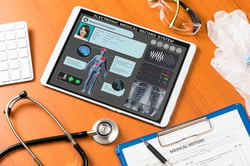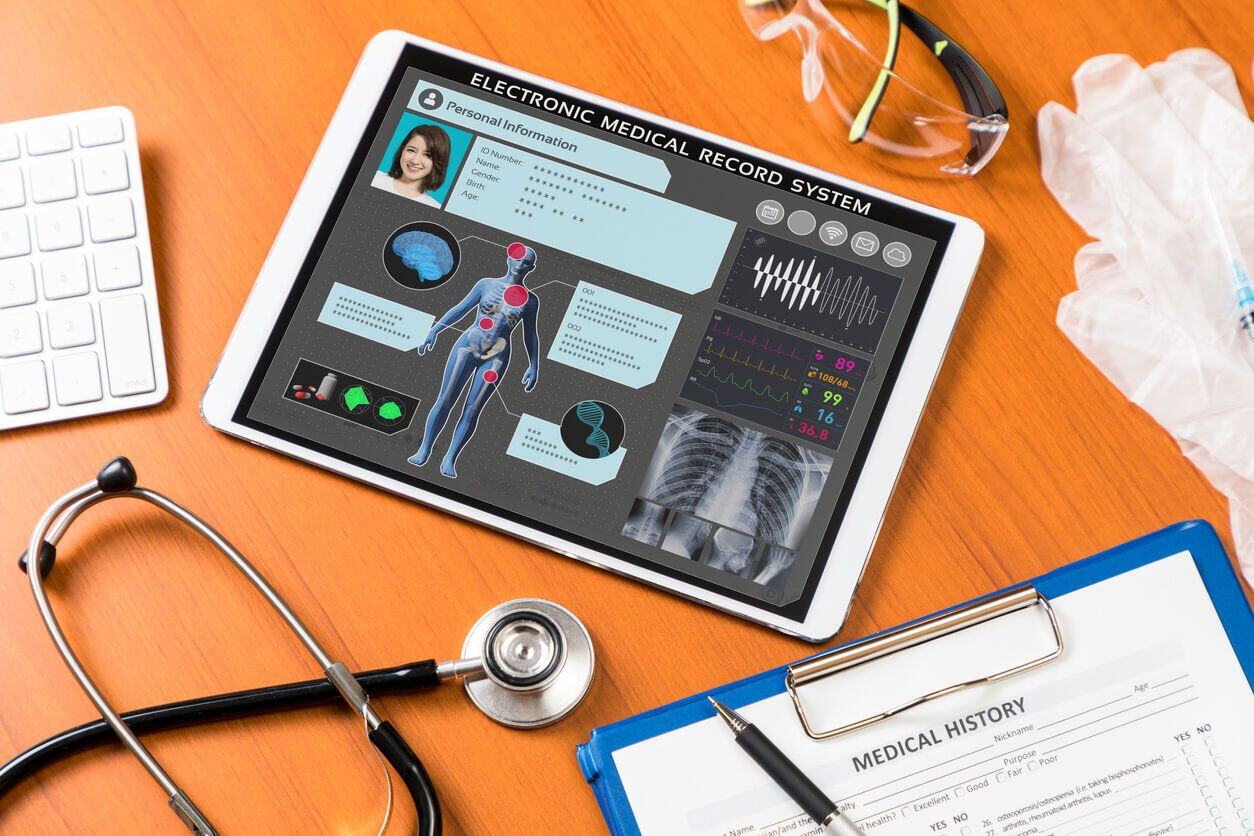6 Types of Radiology Information Handled by RIS
A Radiology Information System (RIS) is an essential software platform for any radiology practice. RIS complements other critical elements of a healthcare system such as electronic health records (EHR) and the picture archiving and communication system (PACS). RIS stores and organizes a large amount of patient information; radiology professionals should familiarize themselves with the variety of information that a typical RIS system processes.
1. Patient Registration and Scheduling

Radiology information system databases contain a breadth of data collected during patient registration. It collects and collates patient scheduling information which is then compiled into interactive lists that can reduce the probability of scheduling conflicts and improve workflow processes. Ultimately, this leads to a reduction in the amount of time patients must spend in the registration process, a reduction in the amount of time healthcare practitioners must spend entering otherwise redundant information, and a reduction in claims denials due to erroneous inputted information.
2. Resource Management
Radiology information system databases must integrate with PACS in order to function properly. RIS can draw images from the PACS, integrate that information with its databases, and host said images in interactive documents that can be referenced by healthcare professionals for the easing of operations. Medical imaging labs generate a considerable amount of documents on patients. Further, RIS software both consolidates and tracks these documents and secures them according to HIPAA guidelines.
Furthermore, RIS databases store and track information about material inventory. RIS material management functionality enables teams to easily monitor both their supply of materials and their budgets. This degree of seamlessness is not feasible with paper-based RIS systems, which are hampered by design limitations that result in fragmented and difficult-to-access data.
3. Examination Performance Tracking
Exam result data can be used to improve workflows by enabling healthcare managers to identify specific problem areas in their operations. Performance tracking provides managers with a wealth of data about key performance indicators (KPI) such as exam success rates and patient satisfaction. This information can drive improvements in healthcare operations that can lead to reduced staff turnover, greater patient satisfaction, and increased revenue growth.
4. Examination Interpretation

Examination interpretations, in RIS software, can be immediately sent to clinicians for further evaluation. Exam interpretations can be integrated with interactive documents to provide both radiographers and clinicians with critical and easily-referable information about a patient. This functionality enables radiology labs and clinicians to seamlessly exchange data, work together, and improve patient care.
5. Results Distribution
Unlike paper-based radiology information systems, RIS software can easily distribute exam results to radiographers, clinicians, and any other element of a healthcare system, such as the EHR. RIS databases store radiology information in a transparent, transferable, and confidential manner; this enables data to be used for a wide variety of purposes such as the generation of performance reports or the tracking of uncollected debts. RIS software can organize its various patient, performance, and financial data into monthly, weekly, or even daily reports.
6. Procedure Billing
RIS databases consolidate all of the billing information of patients from registration to procedure conclusion. RIS software decreases billing time by mitigating instances of clerical errors and other human foibles that can hamper efficient processing and send claims into accounts receivables.
Conclusion
A radiology information system is a critical element of any medical imaging practice. It contains a wide array of information such as patient scheduling, billing data, examination results, performance information, and more. RIS consolidates all of a patient's information into an accessible and secure database that mitigates human error, enhances information flow, improves work processes, and ultimately boosts revenue. Not all RIS software are created equal, radiology practices should choose solutions that can be readily integrated into their existing healthcare infrastructure lest they incur more costs than benefits from transitioning to a new system.
About Stephen O'Connor
Stephen O'Connor is the Director of Brand and Digital Marketing, responsible for many aspects of Advanced Data Systems Corporation’s (ADS) marketing, including product marketing, customer acquisition, demand generation, brand, brand design, and content marketing.
Stephen has more than 20 years of healthcare industry experience. Prior to ADS, Stephen spent 11 years at Medical Resources Inc. (MRI), most recently as the Manager of Marketing & Internet Services, where he and his teams were responsible for all marketing efforts and the market positioning of MRI’s services.
Stephen spends his day's planning, writing, & designing resources for the modern healthcare professional.



